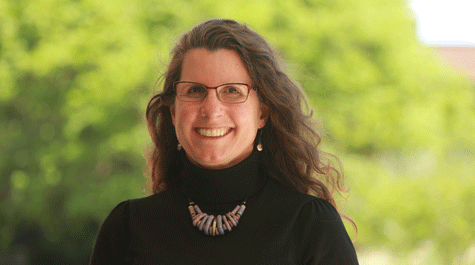Ancient is modern: W&M professor talks teaching classics
William & Mary faculty member Molly Swetnam-Burland teaches courses on Roman archaeology and art, the cities of Rome and Pompeii and Latin language and literature. She researches in the areas of Roman fresco and sculpture. She has published articles and books on Roman Egyptianizing artworks and is working on a new project examining the evidence for imperial freedmen, who ran life behind the scenes in imperial palaces.
Swetnam-Burland was honored with the 2020 Award for Excellence in Teaching of the Classics at the College Level by the Society for Classical Studies. The Adina Allen Term Distinguished Associate Professor at W&M, Swetnam-Burland received the honor — the most prestigious teaching award for classical studies professors in North America — in January. The award committee bases its decisions on detailed study of syllabi, teaching evaluations and testimonials from former students.
W&M News asked her to talk about her approach to teaching.
How did you get interested in the classics and decide you wanted to teach that topic?
I got interested in classics as a sophomore in college. I took a class from a great professor and was hooked.
That actually meant that I was coming to the field a little later than many students. A lot of people in our field study Latin in high school.
I grew up in Las Vegas, Nevada, and Latin was just not offered there in public schools. But this has made it a central goal of mine to open our field to as many people as possible, wherever they come from or whether or not they have studied ancient languages.
And it also means that I know the power of a good class — one that teaches you a lot, but is also entertaining.
What do you do in teaching that is different and relevant for students that works well for you?
I want in no way to make it sound like I know the "one best way" to reach students. But in my opinion, one of the most crucial things one can do as a professor is show students that you care about their learning — that is, that your goal is for them to acquire knowledge and improve skills, and that you are thinking about ways to help them toward that goal.
Obviously, I care about their classroom experience, too, and want my classroom to be a place where people feel comfortable and able to express their ideas. I do certain things to show my students not just that I care about what and how they learn, but to facilitate that for them.
Such as?
One thing is to make sure you are able to express the purpose behind an assignment, for example: "This short paper is allowing us to practice, in a low-stakes way, the skills you'll need for your research paper." Another thing is to be as clear as possible about expectations.
I create rubrics that students can use even before they undertake the assignment, to make sure that what they are planning is in line with my expectations. Frequently, I break assignments down into timelines and steps, so that students will be able to plan well, fit it into their heavy workloads and even have templates to take away from my class that they can apply to other things, for example, their honors theses or other research papers.
How does teaching ancient history in a modern society still resonate so well?
I think teaching about the lives and experiences of those who lived 2,000 years ago remains relevant today and, when done well, is very motivating to students. I frequently teach a class about the remains of the cities buried under the eruption of Mount Vesuvius.
Pompeii and Herculaneum are the main ones, but there were also villas and small sites all along the coast. I find that students love this course, because it is one of the places where we can ask questions about the ancient world inspired by our own modern experiences and have rich enough evidence to get some answers.
What does that show us?
For example, we can talk in real ways about ancient diet — looking beyond the crazy recipes in the author Apicius (stewed cows’ brains, anyone?) to what real people bought, prepared and ate. We have so much evidence, including “shopping lists” and tallies that people scratched onto their walls, to remains of food itself set out in pots and pans waiting to be eaten.
And we even have the evidence provided by the bodies of those who tragically died. All of these reveal that people mostly ate plants, lentils and other legumes, and that meat was a rare treat.
What makes it relatable?
When we adopt an approach like this, it reminds us that Romans and Greeks were real people — and I think it also helps us understand what they wrote, whether epic poems or funny satires, because we see that these texts were written by people who were dealing with issues of their own – from food scarcity to plagues to civil wars.
They might escape from reality by reading and reciting Virgil (there’s a lot of evidence that Pompeians knew their Virgil!) in the same way I might re-read a favorite novel over and over, just because it provides me motivation, relaxation and enjoyment. For the record, my favorite novel is Richard Adams’ “Watership Down.”















